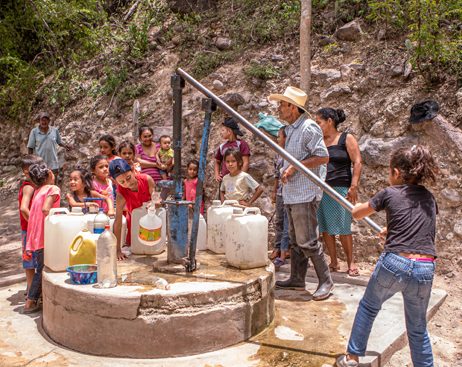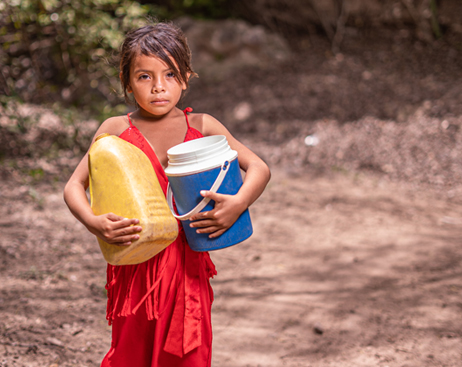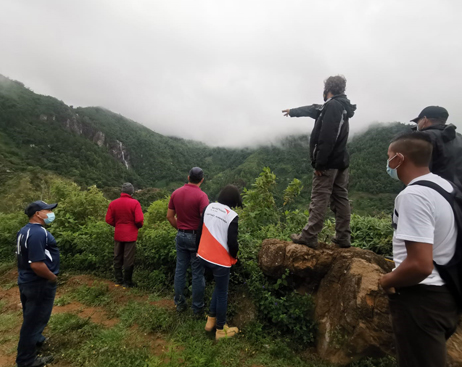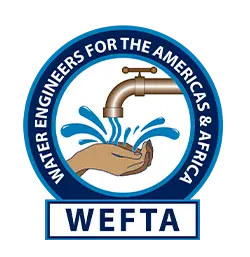
El Tamarindo Water Project
$128,200 still needed to complete this project
Total Project Cost: $605,314
Project Location: Honduras
Community Background
The Village of El Tamarindo, together with neighboring villages of El Rodeo and Guanacastillo, are home to approximately 1,700 people (282 families) in desperate need of a safe, clean drinking water source. The three villages are located 25 miles east of the Honduran capital city of Tegucigalpa; El Tamarindo is located on the banks of the Choluteca River, Guanacastillo and El Rodeo are located slightly above the river valley. The three communities are connected by history, families, commerce, and faith.
The Choluteca River is the main drainage and effluent discharge for Tegucigalpa, a city of 1.5 million people that does not treat its sewage; as a result, the river is highly contaminated with raw sewage, including human and industrial waste. Residents of these three villages consume water from the river because there is no other water source available. Due to the lack of waterlines, families haul water to their homes in jugs and buckets, which they carry by hand (or head). They also have regular physical contact with the river, which is the only water source for bathing and washing clothes; as a result, there is a prevalence of water-borne diseases among these communities. Ironically, the villages are also located less than eight miles from the rainforest-covered mountains of Yuscarán, which have an abundance of pristine, fresh water. Village leaders have long dreamed of building a pipeline to bring water from the Yuscarán Mountains to sustain their communities.
Most community members are subsistence farmers. Beans and corn are the primary crops. Average family income is approximately $1,500 per year ($250 per capita per year). The main source of cash income comes from families selling their staple crops of beans and corn for cash to buy other essentials, such as medicine, other basic foods, and – for those who can afford it – bottled water.
Water, Sanitation and Health (WASH) Concerns
The Choluteca River is essentially an open sewer for Tegucigalpa, with untreated wastewater containing human and industrial wastes. Several years ago, residents of El Tamarindo constructed a shallow, hand-pumped well next to the riverbank, but this well is simply pumping contaminated water that seeps in from the river. Residents consume water from the river because there is no other water source available. They also have regular physical contact with the river, which is the only water source for bathing, washing clothes, etc. Due to lack of running water pipes, families haul water to their homes in jugs and buckets, which they carry by hand (or head).
Residents of Guanacastillo and El Rodeo are further from the river, which limits their contact with the contamination but also makes obtaining water more difficult. Many residents must carry water by hand from distant, untreated sources. Due to lack of water and plumbing, most families do not have toilets; human waste and lack of hygiene resources are additional pathways of contamination and disease transmission.
As a result of this daily contact with highly contaminated water and lack of sanitary infrastructure, in 2020 alone, 12 people (4 adults and 8 children) were diagnosed with Hepatitis A. In addition, World Vision Honduras reports that approximately 80% of children in El Tamarindo are afflicted with intestinal parasites before their 5th birthday. Many more common waterborne diseases like giardia and dysentery likely go undocumented.
The prevalence of waterborne disease not only affects human health in the short-term. It will have long-term effects on the education and development of children. Much of the responsibility for hauling water falls on children. When they get sick from the contaminated water, they miss school; in previous water projects completed by WEFTA in Honduras, over 32% of school absences between 2015 and 2019 prior to project completion were attributed to waterborne diseases.
Proposed Project
The proposed water project, in collaboration with our local partners (World Vision, the Municipal Government, and the Catholic Diocese), will capture water from two perennial streams in the Yuscarán Mountains using concrete stream catchment basins, and transport the water by gravity approximately 15 kilometers (9.4 miles) to concrete storage tanks located in each village. From these tanks, pipe networks will distribute water to every individual home. No electricity is required for operation of the entire project.
The pipeline and tanks are sized according to projected future population of each village, which is based on existing population and a typical growth rate of 3.5% for the next 20 years. The current population is 1,700 people, while the projected future population 20 years from now is approximately 3,400 people. Based on typical daily water consumption of 30 gallons per person per day, the projected future water consumption for all three villages is 102,000 gallons per day, or 71 gallons per minute.
WEFTA and World Vision measured the flow rate of the project’s proposed water source (the confluence of two streams) at the end of the dry season to be approximately 260 gallons per minute. Typically, surface streams have more water during the rainy season, so measuring flow during the dry season provides a conservative estimate. The communities’ future water consumption, including population growth, of 71 gallons per minute is only 27% of the minimum (dry season) water flow in the stream. Therefore, both WEFTA and World Vision’s engineers consider this water source to be reliable year-round and more than capable of sustaining the project’s water demand on a long-term basis.
The transmission pipeline will be constructed primarily of PVC pipe, with pipe sizes ranging from 2 to 4 inches in diameter. Due to the extreme elevation difference between the water source and the villages (over 3,000 vertical feet of elevation drop), a series of locally manufactured pressure breakers will be used to keep the water pressure within the pressure rating of the PVC pipeline.
Most of the pipe will be buried using hand-dug trenches. However, the PVC pipe may be encased in concrete and installed above ground on concrete pillars in some locations where the soil is too rocky to dig trenches or where canyons must be spanned above ground.
WEFTA proposes to construct the project in two phases, as follows:
- Phase 1 – Stream catchment, transmission line, and chlorine treatment.
- Phase 2 – Storage tanks in each village, and distribution lines to every individual home.
The estimated total project cost of both phases is $605,314 including material cost, labor, and oversight. The material cost for Phase 1 is estimated at $146,542 (24% of the project total). The materials cost for Phase 2 is estimated at $40,299 (7% of the project total). The total community contribution to this project in labor and in cash is $352,489 (58% of the total project cost). World Vision will contribute $16,704 in construction management (3% of the project total), while WEFTA will contribute $49,280 in in-kind engineering design and post-construction follow-up (8% of the total project cost).
Sustainability Considerations
Our in-country partners, World Vision, along with the community members will monitor the project in the construction phase and evaluate the project annually to verify household use, payments, cash on hand of the water committee, and operation & maintenance performed on the system. WEFTA will complete post-construction follow-up visits to ensure project success.
Community Engagement
The 282+ connected community households in the service area will contribute 58% of the total project cost by way of cash, labor, and on-going monitoring. This community component is critical for project implementation and for ongoing operation and maintenance of the system once complete. The community and water committee will also be trained on household and system water use to improve understanding and efficient water use.
WEFTA Volunteers
WEFTA will donate engineering and post-construction follow-up to this project equating to 8% of the total project cost.
If you would like additional information about this project, please contact us.
Donate to El Tamarindo Water Project



In Honduras, more than 15%
of the population does not have access to safe water.
This project will provide safe and reliable water for over 280 families!
Our commitment is to the long-term success of the projects we’re involved with and it doesn’t stop when construction is complete.

